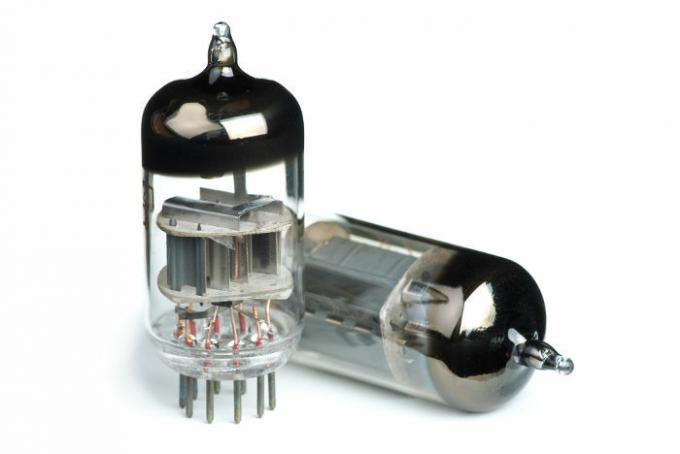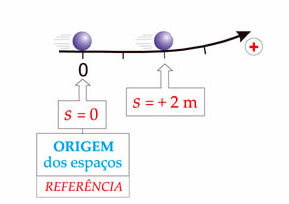Transistor is a semiconductor device, usually made of silicon or germanium, used to amplify or attenuate the intensity of the electric current in electronic circuits. Transistors are the fundamental building blocks of all modern electronic devices, being used in computer chips and smartphones, for example.
What is the transistor's function?
Transistors have two basic functions: amplify the electric current or bar your ticket. When in the amplifier function, the transistors are powered by a low electrical input current, amplifying it and thus producing an output electrical current with greater intensity.
An example of a circuit that uses transistors in this configuration is the microphones. The sound captured by the microphonees produces an electric current of low intensity, then this current passes through a set of transistors, which produce a much more intense electrical signal, capable of driving the speakers of a speaker, by example.
You transistors can also work as switches, turning electrical current on or off in a circuit: just as they are able to amplify electrical current, so are they are able to attenuate it, and this process can occur at a great speed (current transistors do this billions of times per second).
This function made transistors the basic components of all electronic chips, like those present in our computers. All these chips work through a very simple language, the binary code. Computers are capable of translate a long code formed by the digits 0 and 1 in letters, words and images. These digits, 0 and 1, are called bits and are implemented by transistors: when a transistor is switched on (high current), the computer reads the bit 0, When he if find off (low current), the computer assigns the bit 1.
Lookalso:The evolution of computers
Do not stop now... There's more after the advertising ;)
How do transistors work?
All transistors work controlling the passage of electrons inside itHowever, there are different types of transistors, and each one does it in a different way. Modern transistors, like those used in smartphone processors, are so small that they are able to control the movement of each individual electron. Modern chips, a few square centimeters in area, can contain from 5 to 30 billion transistors.
Transistors are made of semiconductor materials. To conduct and amplify the signal of an electrical current, semiconductors are usually doped with materials that can offer them extra electrical charges, making your electricity conduction easier.
Doping is a process in which silicon atoms are replaced by other atoms, such as phosphorus, boron, gallium and others. There are two types of doping: doping type-n and p-type. In n-type (negative charge) doping, atoms are added to the Silicon crystal lattice capable of providing an excess of electrons; in p-type (positive charge) doping, atoms are added that cause a shortage of electrons.
Lookalso:Know the properties of silicon
Altogether there are three configurations of existing transistors: the silicon sandwich, O junction transistor it's the field effect transistor.
• O sandwich it consists of two layers of silicon, one of them with p-doping and the other with n-doping. In this type of configuration, it is possible to have electrical current flow in only one direction. Devices that make use of this assembly are known as diodes.
• O transistorof junction is formed by combining three layers of silicon in different dopings. In this configuration, there are two ways to stack the silicon layers: p-n-p and n-p-n, that is, three layers of silicon according to their respective dopings. In this type of transistor, the electric current is amplified by the appearance of “holes”: it is as if a positive charge traveled in the opposite direction of the electrons (the negative charges). In this case, these positive charges can be understood as regions lacking electrons. This type of driving is called pothole driving. Transistors that can carry charges by conducting electrons and holes are called bipolar junction transistors.
• O transistorinIt is madeinfield (FET) is also formed by three semiconductor layers. Unlike junction transistors, which are activated by an electrical current, FETs are activated by electrical voltages and therefore can amplify or nullify the Electric tension of a circuit. These transistors are cheaper and easier to be manufactured than other transistors, being widely used in electronic chips.
See too: Learn more about the IT area
Where are transistors used?
Transistors can act as amplifiers or switches in electronic circuits. Their most common use is in computer processors, where they are required thanks to their ability to emulate bits by increasing or decreasing voltage, quickly and accurately. Transistors are present in the circuitsintegrated, which make up the logic gates used in electrical circuits of various machines, appliances, computers, cell phones, etc.

Most modern computer chips can contain up to 30 billion transistors.
Origin of transistors

Before transistors, tubes were used in computers.
the transistor of silicon and germanium was created by physicists JohnBardeen and Walter House Brittain in 1947, in the technology laboratories of the American company bellTelephone. In 1948, along with WilliamBradfordShockley, were awarded the Nobel Prize in Physics due to the enormous technological evolution that transistors brought. The researchers' motivation at the time was to create a compact and cheaper device thatwhat the thermoionic valves, used at the time the first computers.
By Me. Rafael Helerbrock



